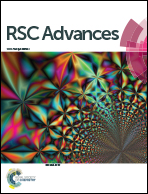Rice husk derived carbon–silica composites as anodes for lithium ion batteries†
Abstract
Carbon–silica composites were obtained via simply heating rice husk at 900 °C under a N2 atmosphere. This composite exhibits a high capacity and superior cycling performance as an anode for lithium ion batteries.


 Please wait while we load your content...
Please wait while we load your content...